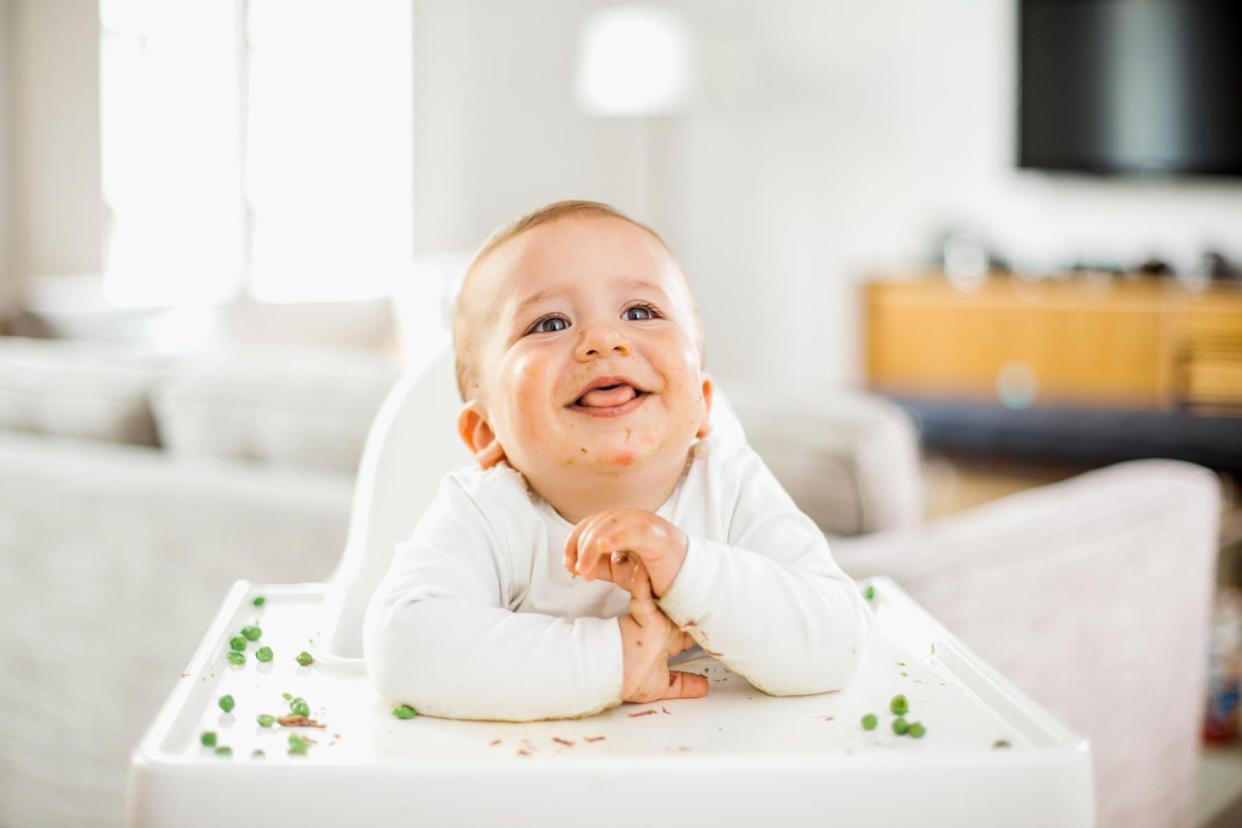How One Mom Embraced Both Baby-Led Weaning and Purees

Alija/Getty Images
Baby-led weaning (BLW) is an increasingly popular tactic for starting solids. It originated in the United Kingdom after the publication of Baby-Led Weaning, by Gill Rapley and Tracey Murkett. Here’s the basic premise: Instead of feeding infants purees with a spoon, parents offer them graspable, soft finger foods.
The goal is that your little one will feed himself, which promotes hand-eye coordination, independence, and healthy eating habits. BLW also strengthens self-regulation, increases exposure to family foods, and helps kids be more adventurous eaters later in life.
It’s important to note that the baby-led weaning experience is different for every family. While some babies embrace it from early on, others don’t fare well feeding themselves—especially those who are born prematurely, have oral motor delays, or are simply uninterested in self-feeding. Moms and dads might also get annoyed by how long it takes for Baby to finish a meal.
Don’t worry, though—there are ways to get the benefits of BLW while also spoon-feeding purees to your infant. Here’s what I learned while combining baby-led weaning with purees.
Start Solids Around 6 Months
If you want your infant to learn self-feeding, you don’t need to be a strict follower of BLW. Simply expose him to finger foods around 6 months of age, when most infants can grab food and bring it to their mouths. Getting your infant familiar with solids will help him adapt to a normal diet, and it also improves hand-eye coordination, self-regulation, and more.
Supplement Finger Foods with Purees
If your baby doesn’t take to finger foods right away, don’t give up your BLW efforts! Instead, you can supplement his nutrition with purees. I chose rich purees full of protein, iron, and zinc—usually from meat, fish, beans, and whole grains. As soon as my baby had no problem handling a smooth puree, we moved to more textured versions and purees with lumps. Make sure to progress between textures promptly so he is challenged frequently and has an opportunity to develop new feeding skills all the time.
Spoon-Feed When It’s Convenient
Watching a baby self-feed is precious, but when I needed to move on with my day, it was much easier to spoon-feed. Generally, I spoon-fed my baby once a day for lunch, and she had opportunities to hone her self-feeding skills at two or three other meals. Make sure to stop feeding at the first signs of fullness; these may include not looking at you, paying more attention to the surroundings, not moving towards the spoon, not opening the mouth, and turning away from the spoon. Stopping when your baby seems full prevents overfeeding, which might lead to unhealthy eating habits in the future.
RELATED: The Best Baby-Led Weaning Foods
You Don’t Need Special Finger Foods
Many blogs on BLW feature recipes like mini frittatas with vegetables, granola bars, and casseroles. Don't have time to prepare specially-made finger foods for your baby? No worries! Many experts recommend sticking with simple foods you’re planning to serve anyway—avocados, roasted chicken, scrambled eggs, bananas, pasta, steamed vegetables, etc.
Every Baby Will Be Different
The most important lesson I learned is there’s no cookie-cutter approach to BLW vs. purees. Some babies thrive on purees, others on finger foods, and some on both. So instead of committing to a certain feeding philosophy, it's best to remain flexible in your approach. Follow your intuition and your baby's developmental signs. And remember this quote by feeding expert Ellyn Satter: "The goal of feeding your baby is to have him join you at the table...not for you to join him at the high chair." Everything else will fall into place.

